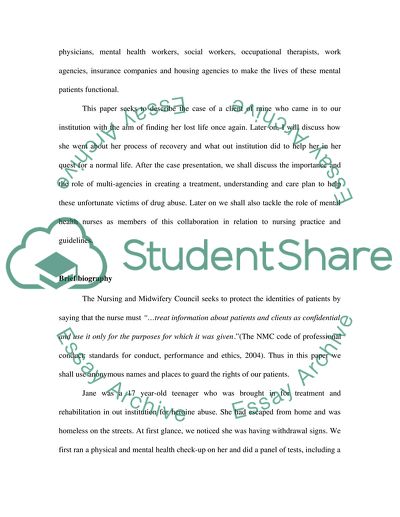Cite this document
(“Multi-agency Treatment, understanding and Care Plan: Heroin Addiction Research Paper”, n.d.)
Multi-agency Treatment, understanding and Care Plan: Heroin Addiction Research Paper. Retrieved from https://studentshare.org/health-sciences-medicine/1723892-multi-agency-treatment-understanding-and-care-plan
Multi-agency Treatment, understanding and Care Plan: Heroin Addiction Research Paper. Retrieved from https://studentshare.org/health-sciences-medicine/1723892-multi-agency-treatment-understanding-and-care-plan
(Multi-Agency Treatment, Understanding and Care Plan: Heroin Addiction Research Paper)
Multi-Agency Treatment, Understanding and Care Plan: Heroin Addiction Research Paper. https://studentshare.org/health-sciences-medicine/1723892-multi-agency-treatment-understanding-and-care-plan.
Multi-Agency Treatment, Understanding and Care Plan: Heroin Addiction Research Paper. https://studentshare.org/health-sciences-medicine/1723892-multi-agency-treatment-understanding-and-care-plan.
“Multi-Agency Treatment, Understanding and Care Plan: Heroin Addiction Research Paper”, n.d. https://studentshare.org/health-sciences-medicine/1723892-multi-agency-treatment-understanding-and-care-plan.


